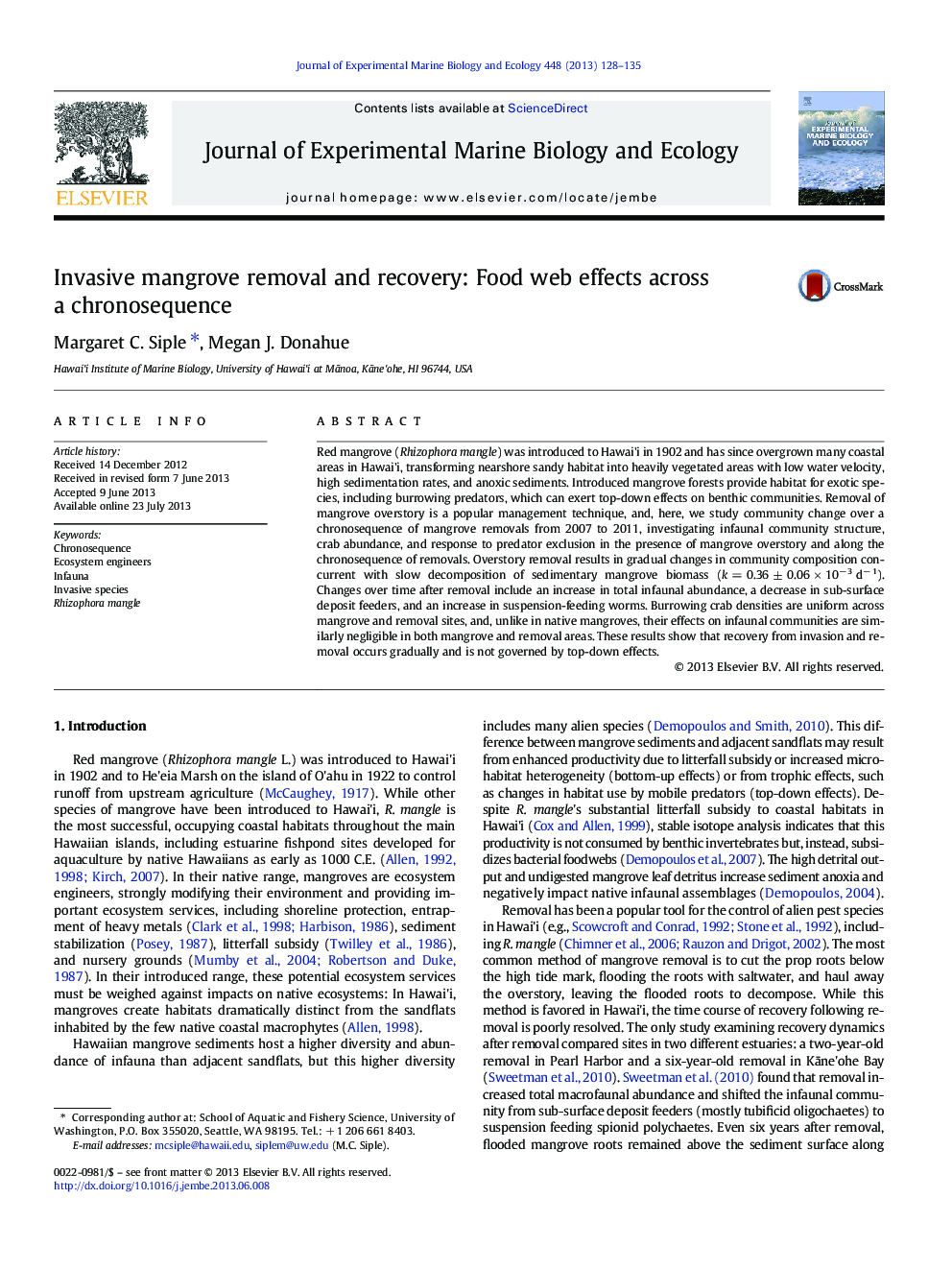| Article ID | Journal | Published Year | Pages | File Type |
|---|---|---|---|---|
| 6304362 | Journal of Experimental Marine Biology and Ecology | 2013 | 8 Pages |
Abstract
Red mangrove (Rhizophora mangle) was introduced to Hawai'i in 1902 and has since overgrown many coastal areas in Hawai'i, transforming nearshore sandy habitat into heavily vegetated areas with low water velocity, high sedimentation rates, and anoxic sediments. Introduced mangrove forests provide habitat for exotic species, including burrowing predators, which can exert top-down effects on benthic communities. Removal of mangrove overstory is a popular management technique, and, here, we study community change over a chronosequence of mangrove removals from 2007 to 2011, investigating infaunal community structure, crab abundance, and response to predator exclusion in the presence of mangrove overstory and along the chronosequence of removals. Overstory removal results in gradual changes in community composition concurrent with slow decomposition of sedimentary mangrove biomass (k = 0.36 ± 0.06 Ã 10â 3 dâ 1). Changes over time after removal include an increase in total infaunal abundance, a decrease in sub-surface deposit feeders, and an increase in suspension-feeding worms. Burrowing crab densities are uniform across mangrove and removal sites, and, unlike in native mangroves, their effects on infaunal communities are similarly negligible in both mangrove and removal areas. These results show that recovery from invasion and removal occurs gradually and is not governed by top-down effects.
Related Topics
Life Sciences
Agricultural and Biological Sciences
Aquatic Science
Authors
Margaret C. Siple, Megan J. Donahue,
